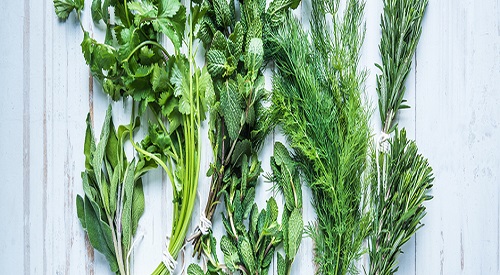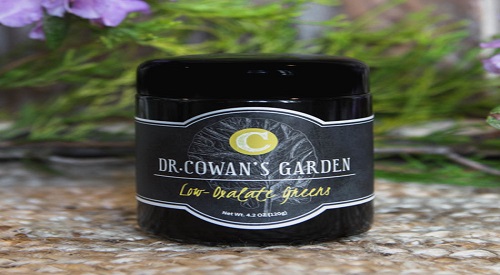Low oxalate greens. The benefit of eating low oxalate foods cannot be overstated because clinical tests have claimed they help reduce the chances of kidney stone formation.
So do we have super low oxalate greens? The answer is yes – and that is according to many pieces of research.
Nevertheless, findings show that most plants manufacture oxalates as a protective mechanism to guard against certain bugs that eat them.
For instance, greens that are more susceptible to attack such as chard, spinach, and beet greens will always tend to have a higher level of the compound ‘oxalate’ as a survival mechanism.
Now let’s mention upfront some greens that are known best to be low in oxalic acid.
Here you go!
The 7 low oxalate greens you can use frequently are as below (Name and Approximate Amount per 100mg):
- Arugula – less than (<) 4mg
- Romaine Lettuces <6.2 mg
- Iceberg Lettuce <5.9mg
- All other Lettuces <6.5mg
- Kale <3.2mg
- Cabbage <10mg
- Scallions – traces
Worth mentioning also is that most green plants including cereals like maize, corns and the rest will have an amount of oxalate (to some the amount is just in traces).
Besides that, other foods which are not greens also contain an amount of oxalates. What this simply means, according to nutritionists is it’s hard to completely have a zero oxalate diet.
Findings have also established our bodies manufacture their oxalate – triggered by Vitamin C which readily exists therein. Should you fear greens like spinach or beet greens that are considered as rich-oxalates?
Well, nutritionists give an okay to eating such greens say once or twice a week (because they supply other extremely important nutrients) – meaning you do not have to completely eliminate such greens from your diet.
Low Oxalate Greens Powder (Review)
There is this new product which the manufacturer says is a blend of low oxalate greens that you can now buy online to substitute with your ordinary smoothies.
It is called Dr. Cowan’s Garden Low-Oxalate Greens, check it here. Its goal as the maker says is to provide on the “go greens” or ready to use green smoothie supplement.
In other words, they have blended a variety of greens they say are low in oxalic acid and packed them ready for use. The product comes in a 120-gram jar and they are currently selling it at $45.
Let’s give Dr. Cowan’s Garden Low-Oxalate Green Powder a short Review. Shall we?
Who is the manufacture of this low-oxalate green powder?
Dr. Cowan’s Garden is the brain behind this ground leafy green powder and his company claims to follow an analysis of testing contacted at the University of Wyoming, Prof. Dr. Michael Liebman.
They say the jar pack has around 50 servings. Which the analysis quotes a complicated formula that looks like: soluble oxalate is 47.9mg ox/100g or 8.1 grams (or to be precise, 3.9mg oxalate per tablespoon). In total serving that is: 950 mg ox/100g or 77mg of oxalate in every tablespoon (8.1g).
What are the ingredients in Dr. Cowan’s Low-Oxalate Green Powder?
Based on the provided information, seems there is nothing too complex regarding what is used in making this green smoothie powder. However, they say it contains Dino kale, mustard greens and collard greens all 100 percent organic.
The direction of use for Dr. Cowan’s low-oxalate green powder
Just to mention upfront so as to avoid this medical kind of lingo that this review might see to pass across. Dr. Cowan clearly states that this product is not meant to replace any kind of medical approach to a low oxalate diet.
In fact, this is just a blend of grounded greens that have been tested to have lower measures of oxalate (or oxalic acid content). The direction of use is as desired based on how sensitive your condition is. Nonetheless, 1-2 teaspoon full gives a reasonable take, with foods or smoothies.
Ways to Use Dr. Cowan’s Low Oxalate Green Powder
If you are a fan of porridge I guess you want to have this powder to supply you the green food nutrients while at the same time keep your oxalate intake low.
In your porridge recipe use the direction of use above – add a spoon or two of the powder into your kind of gruel and wait for it to cook well with food.
Also, have you been looking for low oxalate greens for juicing, a grounded powder of leafy greens for instance? Maybe this Dr. Cowan’s blend of low oxalate leafy greens would do.
However, you may want to inquire from the product manufactures if indeed it is best for juice making. Relevant information concerning that is not provided on the product’s information page on their website.
Low Oxalate Greens – Is Dr. Cowan’s Powder Safe?
Looking at the content, it is logical to say this green stuff supplement seems okay for use. However, there is no legal statement to show that the exact dietary supplement ingredients used are safe or whether the preservatives used has anything to worry about, or proves that all ingredients have been clinically checked.
My Conclusion about Dr. Cowan’s Low Oxalate Green Powder
Well, I just mentioned this product because I thought readers might want to know some deeper details, like what ingredients it contains, the company behind it and an evaluation of its claims.
In other words, I’m not promoting it neither I’m I against it, so for detailed inquiries you can reach out to their customer care support.
As it seems, the powder might suit people who are strictly following a low oxalate diet or those who do not want to try greens they are not sure of their oxalate content.
Unfortunately, we have very little feedback regarding the greens supplement powder, but the few numbers of people who’ve used it seem very satisfied with the product.
So to get more info on this it is good you reach out to Dr. Cowan’s low-oxalate green powder product check it here>.
Away from the leafy green powder in a moment, let’s see…
Low Oxalate Green Herbs

According to this article by OneGreenPlanet most green herbs that are considered food have a low oxalate content. However, they have given one exception – parsley, which has an oxalate content ranging above what is considered moderate; that is, its plus around 35mg in the oxalic acid graph.
My Formula for Eating High and low Oxalate Greens
While it’s extremely important to stick to your doctor recommended diet, you might also realize that your nutritionist asked you to occasionally include high oxalate green into your meal recipes. Is that a mistake? Looks like, but it is not.
The thing is, these same greens that are considered rich in oxalic acid also have their own unique nutritional benefits. In fact, some of the nutrients they supply can hardly be found from other foods.
That’s the reason your oxalate specialist might have you eat a small portion of leafy greens like spinach or beet greens once or twice in a week. However, if you are too concerned about that you can introduce an oxalate reducing agent supplement to help break down those oxalic acid atoms.
That brings us to a draft of how one can eat low oxalate foods kind of a formula, well the one I’d suggest. So let’s kick off: On Monday you can have some Arugula as part of your greens (that’s automatically a low oxalate green).
Tuesday – some lettuces would do, with a heavy lunch. But come Wednesday, you can have some oxalate reduced spinach (maybe with neutralizing agent or boiling and decanting the green smoothie).
Come Thursday, a portion of Dino Kale would keep your body supplied with green nutrients. With that draft off cause, you can now repeat the formula in a cycle of seven days to cover those days not mentioned – Friday, Saturday and Sunday.
Low Oxalate Leafy Greens Recipes
I’ve included this section because there is a whole page we wrote about 11 low oxalate vegetables you can use for your recipes when making a low oxalate diet.
My favorites are kale, peas, radishes, and cabbage – especially when served with beef and some plain rice.
Here is the article — go over it and I believe you’ll find it really helpful. The reason you want a detailed listing of low oxalate greens for smoothies is that you get that freedom to make your meals colorful and reasonably low in oxalic acid.
Now that you have something to hold on regarding greens that are low oxalic, and a clearer overview of the touted Dr. Cowen’s low-oxalate greens powder; plus the article I mentioned above (about veggies that are low in oxalate) — it’ll be easy for you to stay in control of your oxalate intake.
Nonetheless, it’s important to note that most people think all they need is just a low oxalate cookbook and that would solve their oxalate sensitivity problem but that’s not a good approach to managing your kidney stone food-related concerns. The best route would be to see your doctor or nutritionist.
Oxalate sensitivity and kidney stone formation are just symptoms of more serious underlying conditions in your body. You could be having a leaky gut, an abnormal balancing of Vitamin C in your body, or other things that cause your body not to excrete oxalic acid, as it should.
Keeping watch over your oxalate intake is good but it is more advisable to do it with the help of your doctor. That way you’ll be monitoring the actual issue causing your body to have problems with oxalic acid.


Thanks for compiling all of this info. I am new to this diet and this helps me out a lot!